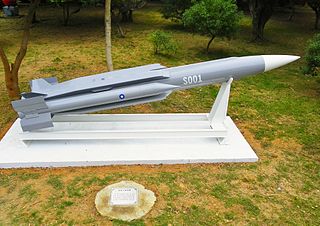
The Taiwanese Military has test-fired a long-range variant of its domestically manufactured Hsiung Feng III missile, a month after China inducted its first aircraft carrier into operational service.
Free Buyers Guide
Leading Guide to Submarine and Submersible Suppliers for the Naval Industry
Thank you.
Go deeper with GlobalData
Your download email will arrive shortly.Please check your mail inbox to download buyer's guide
You may also be interested in:

Test-firings were conducted by Taiwan’s primary research and development organisation, Chungshan Institute of Science and Technology (CSIST), in October 2012.
The new missile possesses an operational range of 400km and cruises at a speed of Mach 3.0, which is almost equal to triple the speed of sound.
An undisclosed military official said to United Daily News: "No ship is capable of withstanding its high-velocity impact."
However, Taiwan’s Ministry of national Defence (MND) spokesman major general Luo Shou refused to comment on the report.
Hsiung Feng III, developed by CSIST, is a short-range, surface-to-surface cruise missile designed to intercept a wide range of enemy ships and land-based targets at ranges of up to 130km in all weather conditions.
Powered by a rocket-ramjet propulsion system, the missile features a single 225kg self-forging fragment warhead, which can be launched from both ship and surface platforms, and can travel at speeds of Mach 2.0 at an altitude between 20 and 200m.
The missile is equipped with an X-band monopulse planar array active radar seeker to meet shorter reaction time requirements of a supersonic anti-ship missile, and also provides resistance to range gate pull-off (RGPO) techniques.
Hsiung Feng III missiles entered operational service in early 2008 and are currently installed onboard the Taiwanese Navy’s Perry-class frigates and other missile boats.
Image: A Hsiung Feng III anti-ship missile being displayed in Chengkungling. Photo: ???.
Free Buyers Guide
Leading Guide to Submarine and Submersible Suppliers for the Naval Industry
Thank you.
Your download email will arrive shortly.Please check your mail inbox to download buyer's guide
You may also be interested in:

By downloading this Buyers Guide, you acknowledge that GlobalData UK Limited may share your information with our partners/sponsors who may contact you directly with information on their products and services.
Visit our Privacy Policy for more information about our services, how GlobalData may use, process and share your personal data, including information on your rights in respect of your personal data and how you can unsubscribe from future marketing communications. Our services are intended for corporate subscribers and you warrant that the email address submitted is your corporate email address.



